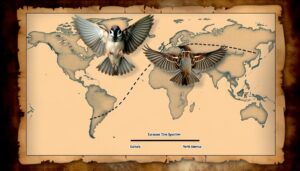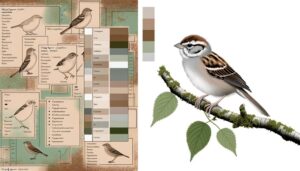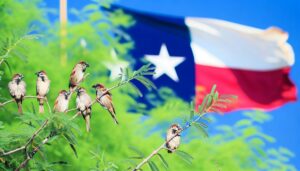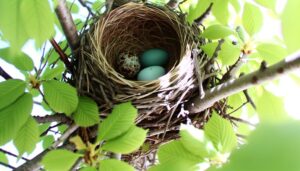Identifying the Nineteenth Century’s Most Common Sparrow
In the nineteenth century, the House Sparrow was the most common sparrow. Its population mirrored environmental and socio-economic conditions.
Urbanisation, food availability, and farming reshaped its survival dynamics, triggering fluctuations. It provided critical pest control in agricultural ecosystems, consuming harmful insects, and helped in crop pollination.
Simultaneously, it was culturally significant in folklore and literature, symbolizing humility and joy. Its role in disease spread and noise pollution marked negative impacts.
Understanding its historical presence can offer insights into its present and future status. Venture further to explore this versatile bird's multifaceted existence.
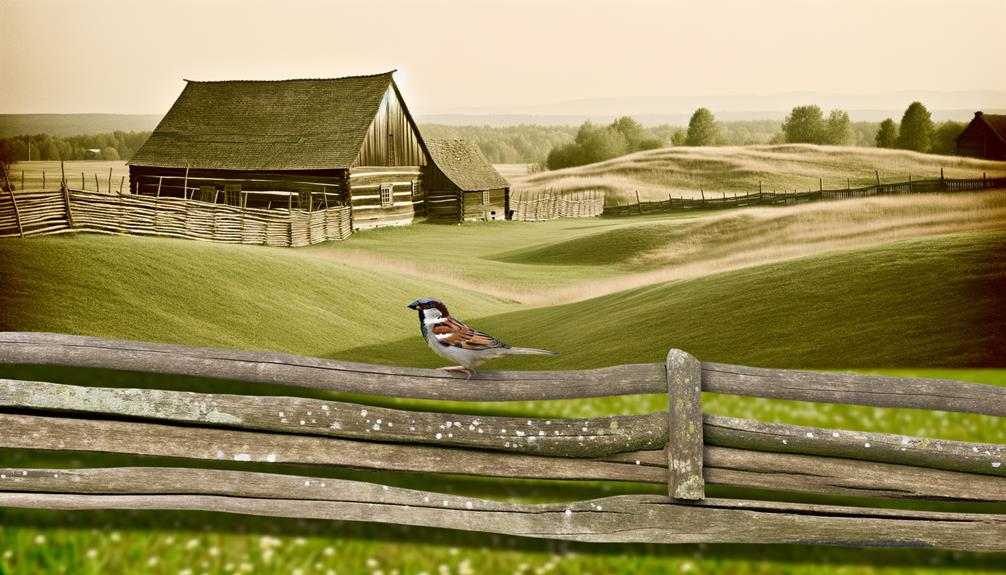
Key Takeaways
- In the 19th century, sparrows were a crucial indicator of environmental health and socio-economic conditions.
- Sparrows played a significant role in agricultural ecosystems, controlling pests and aiding in crop pollination.
- The nesting habits of sparrows often reflected the socio-economic status of the area they inhabited.
- Sparrows were seen as symbols of commonness or humility in Western literature and of joy or soul's freedom in Eastern texts.
- Changes in sparrow populations during this period were influenced by factors such as habitat alterations, food availability, and predator-prey dynamics.
Sparrow's Significance in 19th Century
In the 19th century, the humble sparrow held an unanticipated yet profound significance, serving as a key indicator of environmental health and socio-economic conditions. Their population dynamics reflected the state of the natural environment, as they thrived where resources were abundant and suffered where they were scarce. Scientists utilized this correlation to monitor environmental changes effectively.
Additionally, sparrows' nesting habits in urban landscapes indicated the socio-economic status of a region. Affluent areas attracted more sparrows due to abundant food sources, cleaner environments, and fewer predators. Conversely, impoverished locales saw fewer sparrows.
Hence, this tiny bird served as a living barometer, providing critical insights into the health of ecosystems and the well-being of human communities alike.
Role in Agricultural Ecosystems
Remarkably, sparrows played a pivotal role in 19th-century agricultural ecosystems, contributing significantly to pest control and crop pollination. They engaged in biocontrol by consuming vast quantities of insects harmful to plants, thereby reducing the need for chemical pesticides.
Analyzing their diet reveals a large portion of it comprised of aphids, caterpillars, and beetles, which are infamous for devastating crops. Consequently, they were invaluable allies for farmers.
Similarly, these birds also took part in pollination – they'd inadvertently transfer pollen while feeding on nectar or insects. This assisted in the reproductive process of various crops, enhancing productivity and diversity.
This symbiotic relationship between sparrows and agriculture was a demonstration of the intricate web of relationships characterizing ecosystems. However, their decline has threatened this balance, suggesting potential adverse impacts on agriculture.
Sparrows in Literature and Folklore
Beyond their ecological role, sparrows have also held a prominent place in literature and folklore, symbolizing a variety of virtues and truths across different cultures.
In Western literature, sparrows often represent commonness or humility, while in Eastern texts, their symbolism can range from joy to the soul's freedom.
In Greek mythology, sparrows were sacred to Aphrodite, the goddess of love, embodying love and desire. Conversely, in Chinese lore, a sparrow is seen as a harbinger of good luck, symbolizing industriousness due to their ceaseless foraging.
The nuanced representation of sparrows in literature and folklore underscores their universal appeal and cultural significance, reflecting our inherent connection and fascination with these ubiquitous creatures.
Impact on Human Health and Welfare
Despite their small size, sparrows can have a significant impact on human health and welfare, both positively and negatively. These tiny birds are known to help control insect populations, which can lead to a decrease in diseases spread by pests. However, they can also spread diseases such as Salmonella and E. coli through their droppings.
The table below highlights some key points:
| Positive Impact | Negative Impact | Examples |
|---|---|---|
| Pest Control | Disease Spread | Insects controlled vs Salmonella, E. coli |
| Seed Dispersal | Noise Pollution | Help in plant growth vs disturbed sleep |
| Biodiversity Indicator | Agricultural Damage | Ecosystem health vs crop loss |
The importance of sparrows in our ecosystem is undeniable. However, managing their populations to minimize negative impacts should be a priority in urban planning and public health policy.
Changing Sparrow Populations Over Time
Sparrow populations have undergone significant transformations throughout the nineteenth century, observing a steady increase and decrease due to a complex interplay of ecological factors. These fluctuations were influenced by changes in habitat, food availability, and predator-prey dynamics.
Urbanization and agricultural intensification, for example, led to habitat fragmentation, impacting the sparrows' breeding and foraging patterns. Changes in farming practices also altered the availability of seeds and insects, their primary food sources. Predation pressure, especially from domestic cats and birds of prey, was another crucial factor.
In-depth studies indicate that these shifts weren't linear or uniform across regions, pointing towards the intricate dynamics of sparrow populations. Understanding these changes provides valuable insights into the species' past, present, and future.
Conclusion
In the 19th century, sparrows were as abundant as stars in the sky, playing vital roles in agriculture, impacting human health, and even gracing literature and folklore.
Their prevalence, however, wasn't to last. Over time, the sparrow populations have experienced significant shifts, impacted by changes in their ecosystems.
Nevertheless, the common sparrow's contribution to the 19th-century society is an undeniable proof of the intricate intertwinement of human and animal lives.

